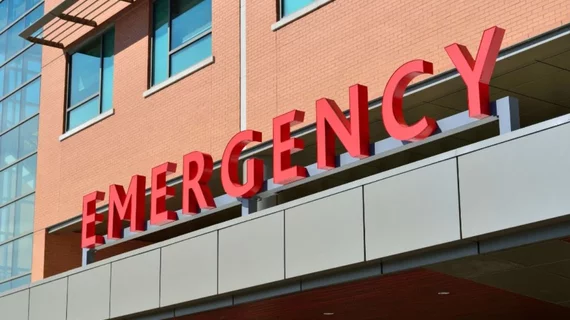Emergency department spending in the US grew 4.4% to $136B, outpacing healthcare overall
Spending across emergency departments in the U.S. has jumped by more than 4% over the decade ending in 2016, outpacing other healthcare sectors, according to recently released figures.
The findings are based on data from a nationally representative sample of hospital ED visits spanning 2006-2016. At the study’s onset, annual spending, adjusted for inflation, topped $79.2 billion and grew to $136.6 billion at the decade’s close. Overall healthcare expenditures grew by 1.4% during that same time, experts reported Wednesday in PLOS One.
Road injuries, falls and urinary diseases accounted for the highest percentage (14.1%) of that overall total, University of Washington in Seattle experts noted.
And while emergency department spending makes up a relatively small piece of the overall healthcare pie, these insights can help policymakers make future value-based reforms, the researchers explained.
“This study is the first to systematically characterize what health conditions account for ED spending in the U.S. over time, serving as a foundation for future work to explore the value of this spending and whether such growth has been sufficient for supporting the unique role that the ED serves to millions of Americans, including in the current era of the COVID-19 pandemic,” Kirstin Woody Scott, PhD, with UW Seattle’s Institute for Health Metrics and Evaluation, and co-authors added.
Scott et al. found the percentage of U.S. health spending tied to emergency departments increased from 3.9% in 2006 to 5% in 2016. Private and public payers both spent about the same during this time (49.3% and 46.9%, respectively), while out-of-pocket payments made up about 3.9%.
Broken down further, women accounted for 60% of ED spending compared to men, and those ages 20-44 spent 35.6% compared to other age groups. Per-person visits also ballooned from $660 in 2006 to $943.20 in 2016.
Analyzing these groups further may prove fruitful for future research efforts, Scott and co-investigators explained.
“Focusing on health conditions where the greatest absolute and relative changes in ED spending are occurring, even after accounting for increases in visits, can inform future value-based initiatives within the ED to ensure optimal care for the millions of patients it serves,” they concluded.
Read the full study here.

